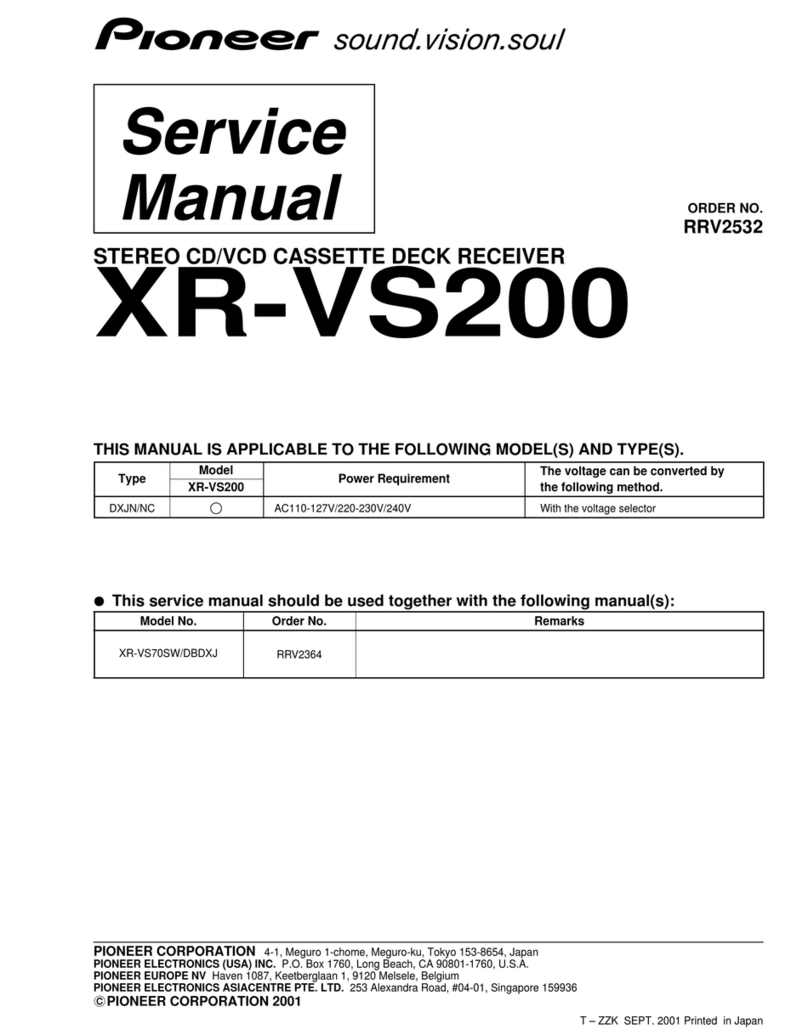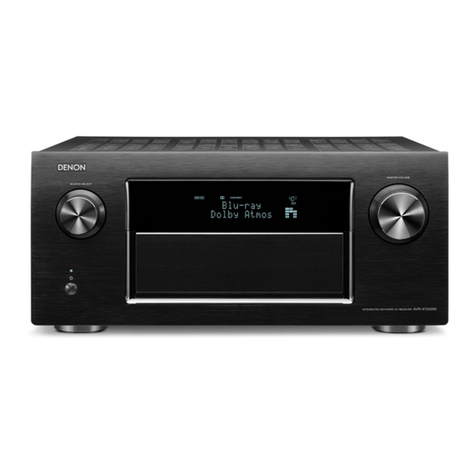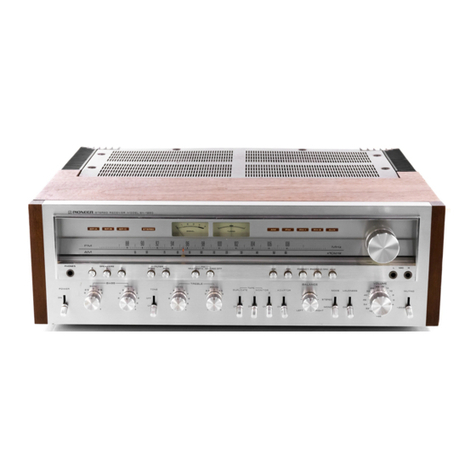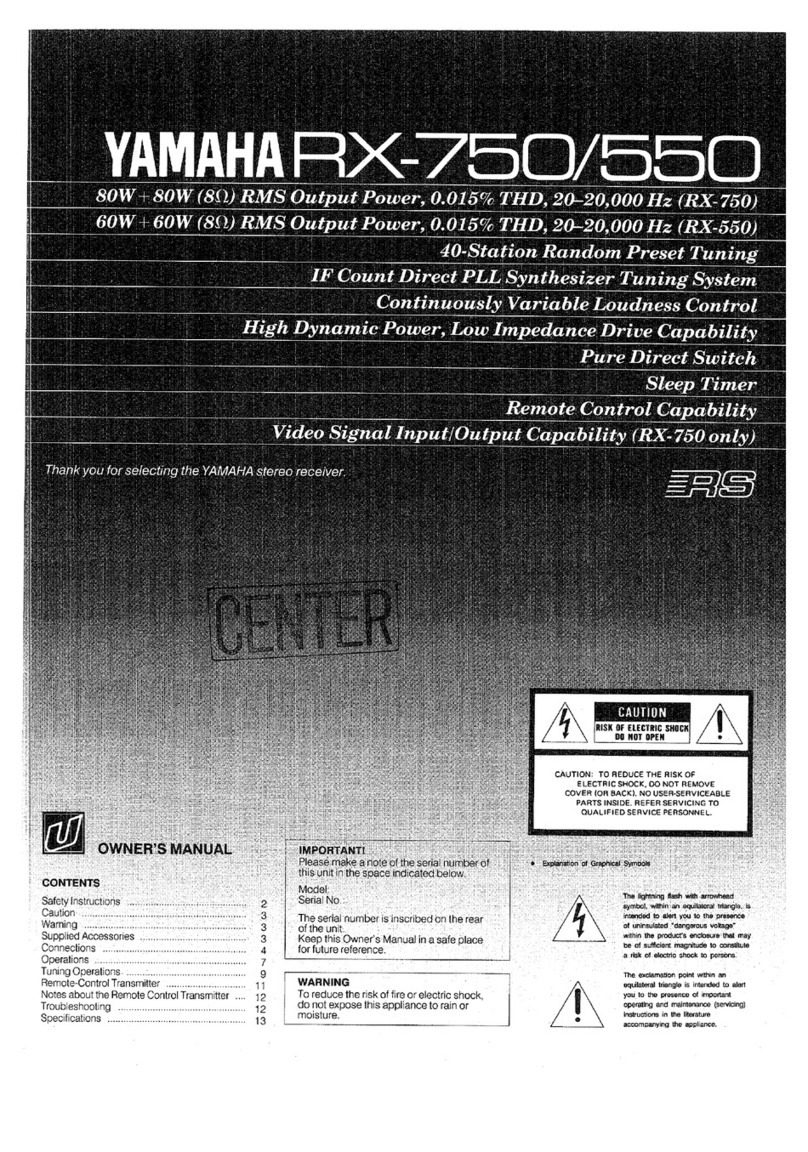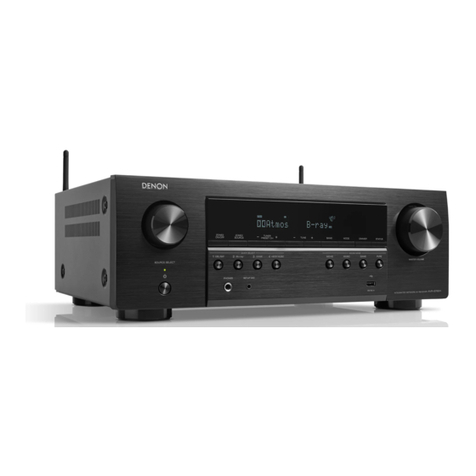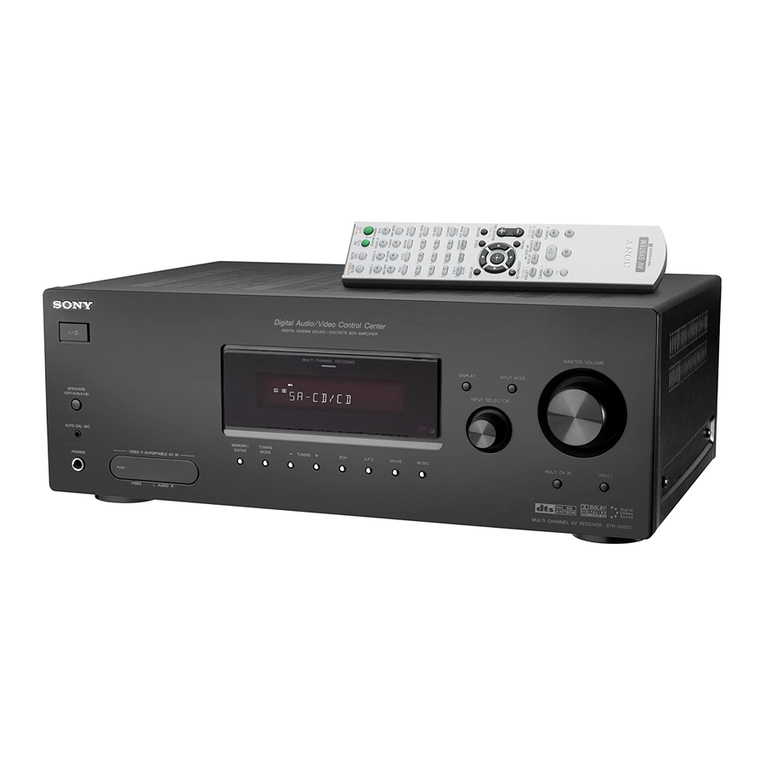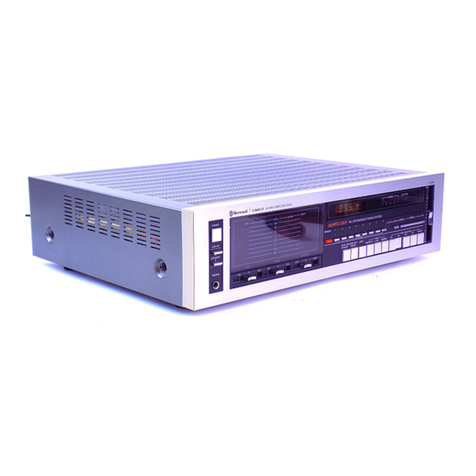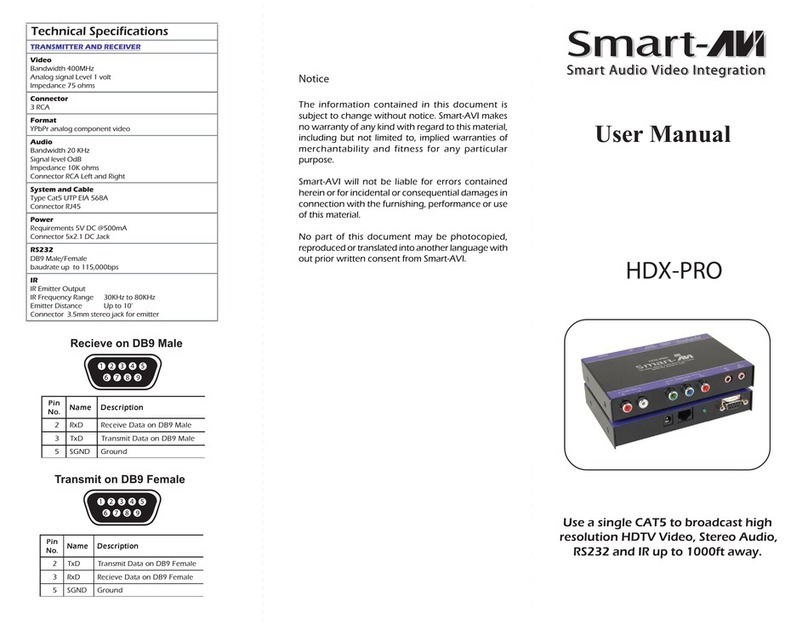digit will not involve any number except 1, fre-
quency data is applied only to input A at time T4,
the B, C and D inputs serving as for data desig-
nating the FM/AM operational mode. Input L is
the load pulse input employed to prevent mis-
rading of input data. Data latching starts with
down stroke of the load pulse.
The SX-D5000 synthesizer system is operated
on the basisof time division pulses (T1-T4) pre-
pared by the synthesizercontrol IC (TC9124AP).
Data transfer is basedon dynamic time division.
OperatingDuringFM Reception
Fig. 4-5 outlines the block diagtam of the SX-
D5000 synthesizer stage during FM reception.
With the basic operational step at 100kHz in
Fig. 4-5, and the prescalar
dividing the frequency
by 8, the phase comparison frequency will be
t2.5kHz. The referencefrequency signalis obtain-
ed by dividing the 6.4MHz crystal oscillator output
by 512. And since the reception band is 87.5
MHz to 108MHz and the IF 10.7MH2,the local
oscillator frequency will range from 98.2MHz to
118.7MH2. After dividing by 8 in the prescalar,
this range will be 72.275MH2 to 14.8375MH2.
Hence, the 12.5kHz may be obtained by setting
the programmable countet frequency division
ratio N to 982-1187 for comparison with the
reference signal in the phase comparator. The
phase comparator output is passedvia a low-
pass filter to the tuning circuit vari-cap, resulting
in the local oscillator frequency being locked to
8N times the reference frequency (12.5kH2), or
in other words,N times 100kHz.
Since the reception frequency data (n) applied
to the synthesizerIC (TC9123P-GR) is shown in
the FL indicator tube (frequency display) as
875-1080, the required frequency division ratio
may be obtained from the reception frequency
data by programming for frequency division
ratioN:n+107 duringFM reception.
50kHz StepOperation (Model SX-D5000/S/G)
The circuit shown in Fig. 4-5 will only change
the reception frequency in 100kHz steps unless
otherwise modified. By altering the frequency
division ratio N, a 50kHz shift circuit may be
activated with every second 100kHz frequency
shift, resulting in the reception frequency being
changedin 50kHz steps.
The Fig. 4-5 circuit forms a PLL (phase
locked
loop) where the local oscillator signalis sampled,
divided, and then locked to a frequency 8N times
the referece frequency (12.5kH2). Consequently,
any attempt to vary the local oscillator frequency
will result in the voltage applied to the vari-cap be-
ing changed in a way that wilI tend to cancel this
variation. If then by some means a count can be
obtained 50kHz lower than the actual frequency
when the local oscillator is being sampled,it will
be possible to alter the voltage applied to the
vari-cap so that the oscillation frequency is increas-
ed by 50kHz.
The prescalarIC (TD6L02P) shown in Fig. 4-6
contains 3 separate 1/2 frequency dividers for a
total frequency division of U8. If a single shift
pulse is applied to pin 9, a pulsecount at the Ll4
division stage will be eliminated. And if the shift
pulse frequency is 72.5kH2, a total of 12,500
pulses will not be counted during the 1 second
period. In terms of the IC input terminal (pin 2),
this is equivalent to not counting 50,000 pulses
within the sameperiod, which in turn is equivalent
to applying an input frequency which is 50kHz
lower than the actual input frequency. The PLL
consequentlyattempts to cancelthis change,
there-
by increasing the voltage applied to the vari-cap so
that the oscillation frequency is increased by
50kHz. The local oscillator frequency is thus
locked at afrequency increasedby 50kHz, thereby
shifting the reception frequency by +50kHz.
98.2-118.7lVHz -12.275-
tc (Tc9123-GR)
Fig.4-6 50kHzShiftCircuit
10
Fig.4-5 OutlineDuring
FMReception
















